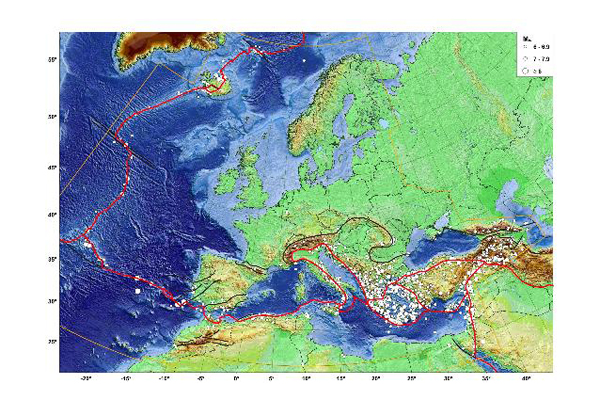
© Helmholtz Centre Potsdam GFZ German Research Centre for GeosciencesMap of epicentres Mw ≥ 6 quakes in EMEC , plate boundaries (red) and selected first order fault (black).
Earthquakes in Europe have influenced everything from its legends to its languages.
According to Greek mythology, the Oracle at Delphi spoke through women who inhaled delirium-causing vapors; now, modern geologists say these vapors were hydrocarbon gases released along earthquake faults and fractures crisscrossing the site of the Delphi temple.
In Italy, a magnitude-6.7 quake in 1638 permanently tweaked the Calabria region's dialects, according to a study published in the journal
Annali di Geofisica in 1995. For example, the town of Savelli, founded after the quake, was linguistically isolated from its neighbors because it was settled by refugees from villages far to the west.
About 45,000 earthquakes large enough to feel have rocked the continent in the past 1,000 years, according to a newly updated catalog of earthquakes in Europe and the Mediterranean. Combining this historic information with modern-day geologic investigations is the first step in forecasting Europe's future risk of earthquakes, researchers say.
"One has to bring together the information from very old times, and from very modern times," said Gottfried Grünthal, of the GFZ German Research Centre for Geosciences in Potsdam, Germany.
Estimating earthquake risk requires "good knowledge about
the seismological past. That means we have to extend our knowledge of the seismicity of an area as long into the past as possible," Grünthal said.


